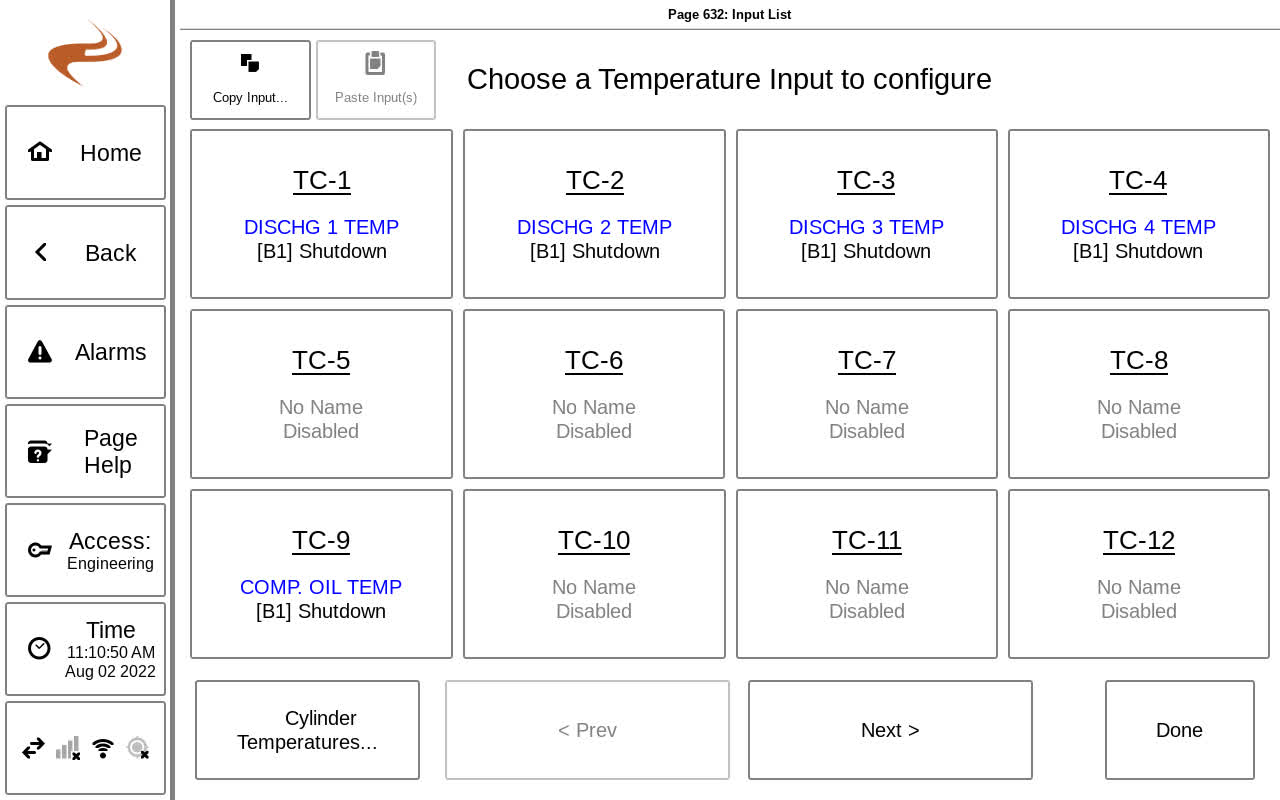Annunciator Basic Setup and Configuration Overview: Difference between revisions
Sean Sanders (talk | contribs) (Created page with "=== OVERVIEW === There are a large number of annunciator setup screens, all accessed through the Annunciator Setup Pages (Pg. 620) screen and its subpages, reached by selecting the “Annunciator Setup” button on the Annunciator Home screen. Subsequent sections of this part of the manual will describe the setup of individual parts of the system. The bulk of the setup items are under the subpage “Inputs Setup” or “Outputs Setup”. === BASIC INPUT SETUPS === The...") |
Sean Sanders (talk | contribs) |
||
| Line 34: | Line 34: | ||
* Optional secondary warning: If an extra warning is desired, it can be added here. | * Optional secondary warning: If an extra warning is desired, it can be added here. | ||
[[File:Thermocouple Input Setup.jpg]] | |||
''Input Setup Example- Thermocouple'' | ''Input Setup Example- Thermocouple'' | ||
Revision as of 18:12, 2 August 2022
OVERVIEW
There are a large number of annunciator setup screens, all accessed through the Annunciator Setup Pages (Pg. 620) screen and its subpages, reached by selecting the “Annunciator Setup” button on the Annunciator Home screen.
Subsequent sections of this part of the manual will describe the setup of individual parts of the system. The bulk of the setup items are under the subpage “Inputs Setup” or “Outputs Setup”.
BASIC INPUT SETUPS
The basic four types of inputs (Analog, Digital, Thermocouple, and Magnetic Pickup) are setup through “Annunciator Setup” then “Inputs Setup”, or during the setup wizard. Details on the setup items of each is listed below.
Digital Inputs
- Name: Choose or type in a name for the input
- Type: Choose normally open or normally closed, based on the sensor type
Newer annunciator versions also allow a detect loop option
- Alarm action and class: Choose as needed based on the descriptions in the overview section
Analog Inputs
- Name: Choose or type in a name for the input
- Type: Choose 0-5V, 1-5V, or 4-20mA based on the sensor type
- Value at (low) and (high): Enter the full range of the sensor. This should be printed on the sensor itself or can be found in the sensor documentation.
- Units: Enter the unit of the sensor for when displaying the value
Note: If an EMIT governor is on the system and pressure-based speed control is used, the suction/discharge sensors on the annunciator must use the units “PSI” or “KPA”.
- Alarm low and high: Enter the low and high alarm for the sensor. If either the low or high is not needed, it can be put at the limit or out of range of the sensor to keep it from ever faulting.
- Alarm action and class: Choose as needed based on the descriptions in the overview section
- Optional secondary warning: If an extra warning is desired, it can be added here.
Thermocouples
- Name: Choose or type in a name for the input
- Type: Choose Type K or Type J based on the thermocouple type
- Display range: Choose the low and high display range for the input. This only limits how the gauges and graphs will be drawn, and does not have any effect on actual system operation. For example, one might want to have jacket water temperature use a range of 100-200 degrees, but postcat temp have a range of 300 to 1300 degrees.
- Alarm low/ high: Choose the low and high alarms if required. An unneeded limit can be set to zero to be disabled.
- Alarm action and class: Choose as needed based on the descriptions in the overview section
- Optional secondary warning: If an extra warning is desired, it can be added here.
Input Setup Example- Thermocouple
Magnetic Pickup
- Number of flywheel teeth: Enter the number of teeth expected on the MPU.
- Low/high alarm values: Enter limits as required. The low limit can be set to ”0” if not needed.
